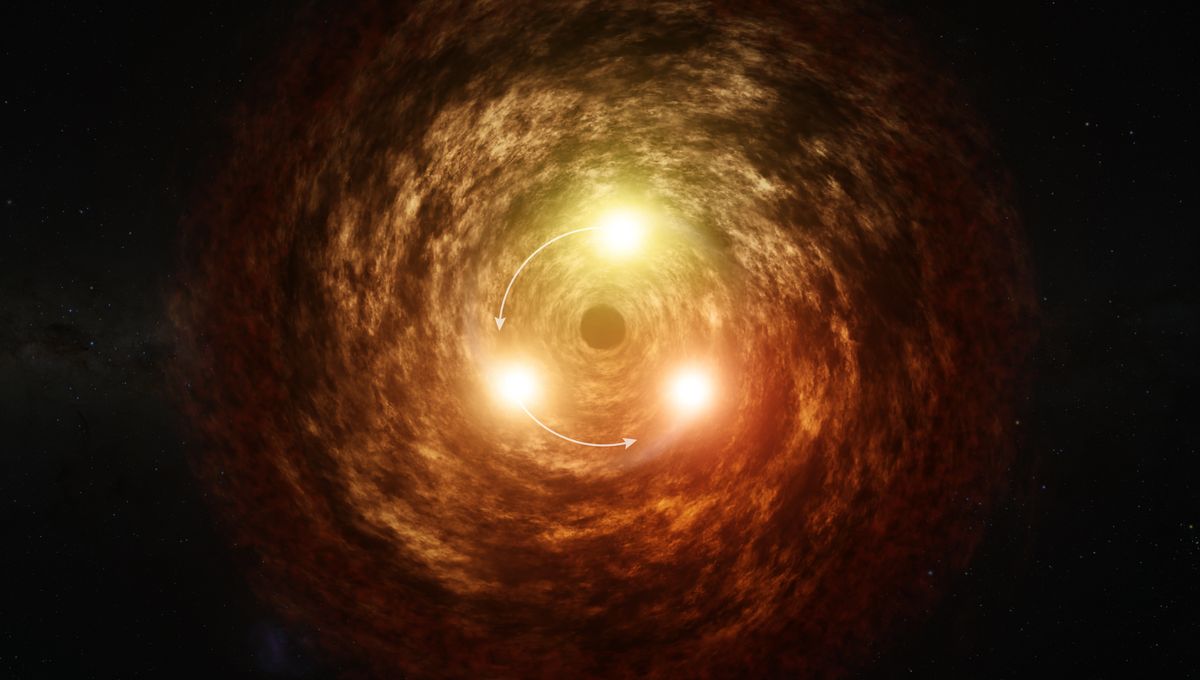
Sagittarius A* is the supermassive black hole at the center of the Milky Way. As supermassive black holes go, it is fairly quiet. It’s not creating any galaxy-wide tantrums that should worry us. It does flare up though, and studying these flares across wavelengths has been very important to create models about the extreme environments around black holes. There was a major set of observations missing though – but astronomers have finally been able to fill in the gap.
Past observations have studied the flares in near-infrared as well as sub-millimeter and radio. This painted a strong picture of what is going on around a black hole. Sagittarius A* (Sgr A* for short) is surrounded by an accretion disk of material. There are magnetic field lines going through this disk and when two lines get close, they can connect, releasing a lot of energy. Basically, the reconnection accelerates electrons to close to the speed of light. This is known as synchrotron radiation.
However, the gap in coverage was a concern. What if something was happening in the wavelength range that went beyond the model? Researchers used multiple observatories to build a picture of these events across all types of light. Nothing was detected in X-rays, suggesting that the flare was not that energetic.
But contemporary observations in the submillimeter using the Submillimeter Array (SMA), and in the mid-infrared (MIR) with JWST, painted a whole picture. The flare was first witnessed in MIR and about 10 minutes later in submillimeter light, in agreement with the synchrotron radiation scenario.
“Our research indicates that there may be a connection between the observed [millimeter]-variability and the observed MIR flare emission,” lead author Dr Sebastiano D. von Fellenberg, from the Max Planck Institute for Radio Astronomy, said in a statement.
“Sgr A*’s flare evolves and changes quickly, in a matter of hours, and not all of these changes can be seen at every wavelength,” added Dr Joseph Michail, one of the lead authors on the paper and an NSF Astronomy and Astrophysics Postdoctoral Fellow at the Smithsonian Astrophysical Observatory. “For over 20 years, we’ve known what happens in the radio and near-infrared (NIR) ranges, but the connection between them was never 100% clear. This new observation in mid-IR fills in that gap.”
The team suggests that this multiwavelength approach should be continued to study Sgr A* and should be expanded to other objects such as M87*. The two are the only supermassive black holes that have been observed directly thanks to the Event Horizon Telescope. There is more to find out about both of them.
“While our observations suggest that Sgr A*’s mid-IR emission does indeed result from synchrotron emission from cooling electrons, there’s more to understand about magnetic reconnection and the turbulence in Sgr A*’s accretion disk,” said von Fellenberg. “This first-ever mid-IR detection, and the variability seen with the SMA, has not only filled a gap in our understanding of what has caused the flare in Sgr A* but has also opened a new line of important inquiry.”
Michail added, “We still want to know, and need to find out… what other secrets is Sgr A* holding that the mid-IR can unlock? What’s really behind the flare’s variable emission? There’s a wealth of knowledge stored up inside this black hole’s region just waiting for us to access it.”
The study was presented in a press conference at the 245th proceedings of the American Astronomical Society and has been accepted for publication in The Astrophysical Journal Letters. A preprint is available via arXiv.
Source Link: First Infrared Flare-Up Detected From The Milky Way’s Supermassive Black Hole